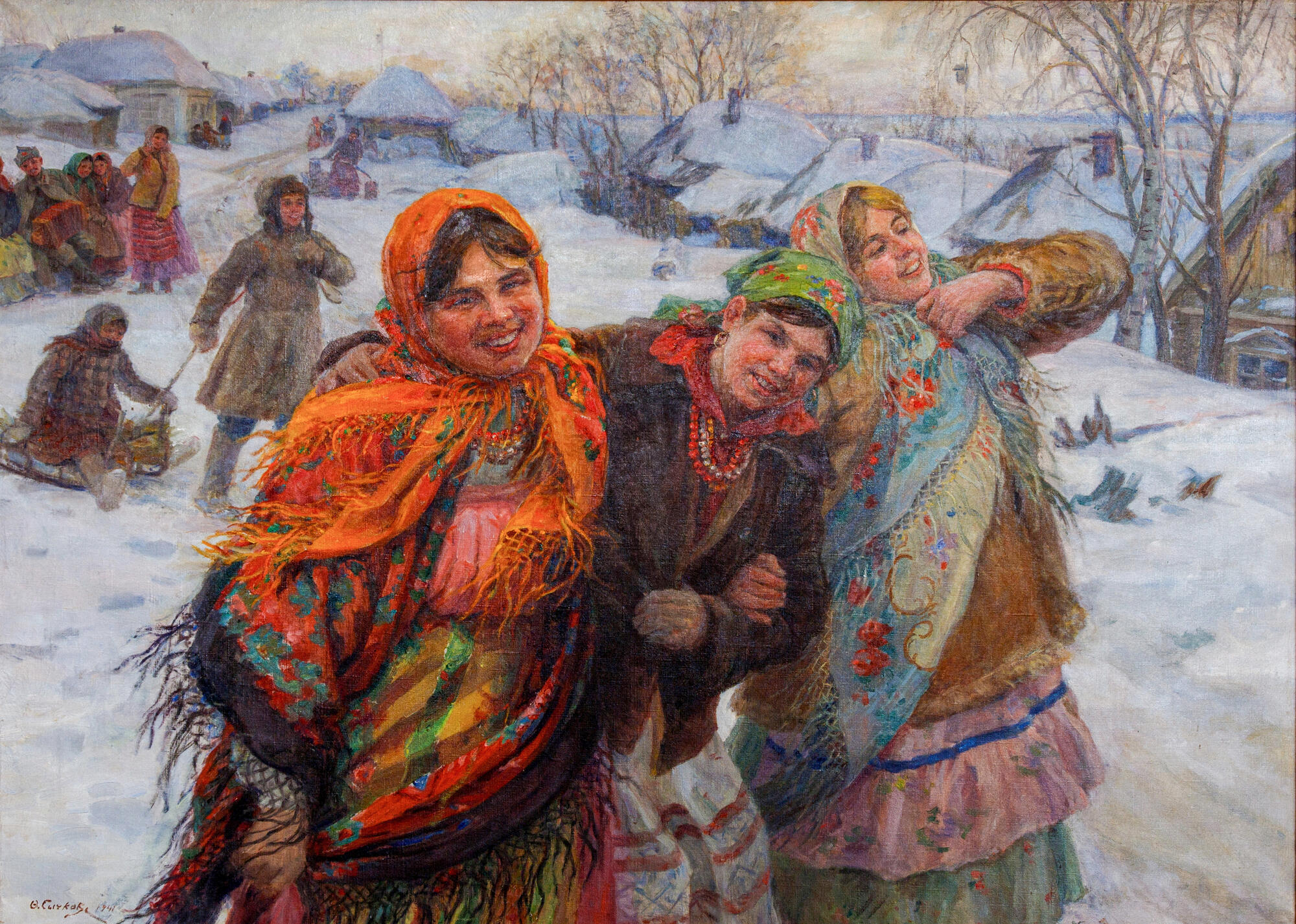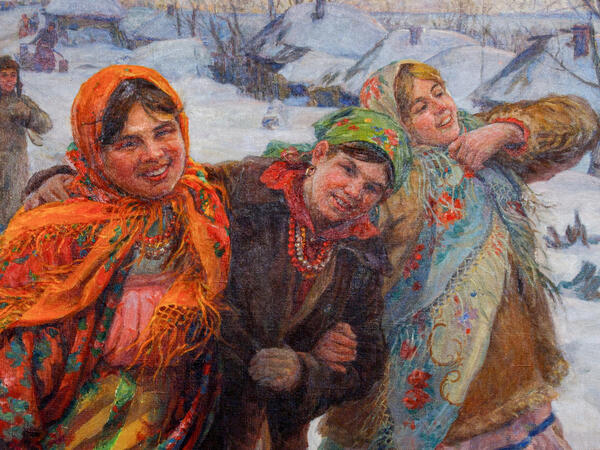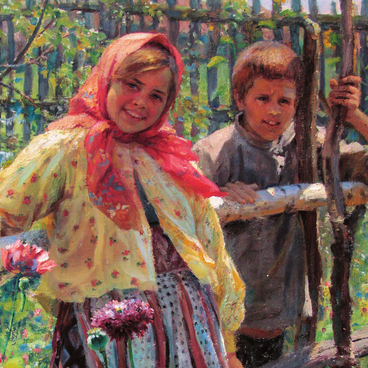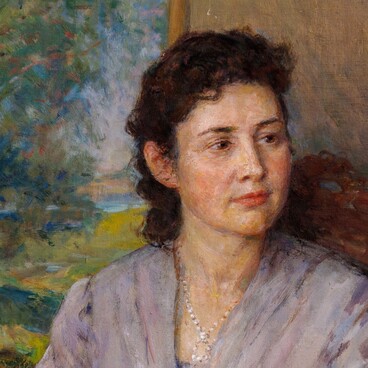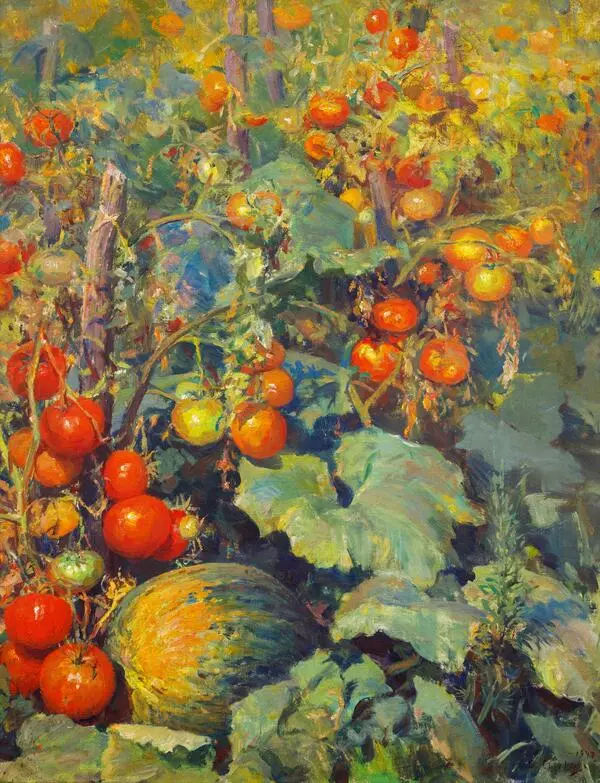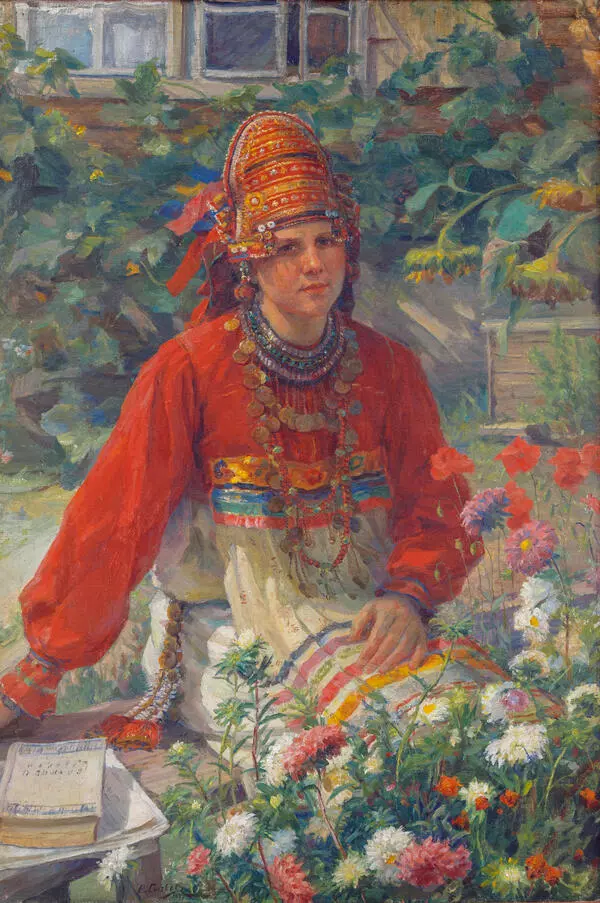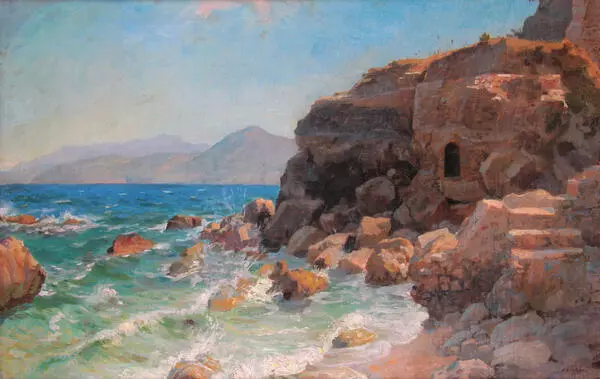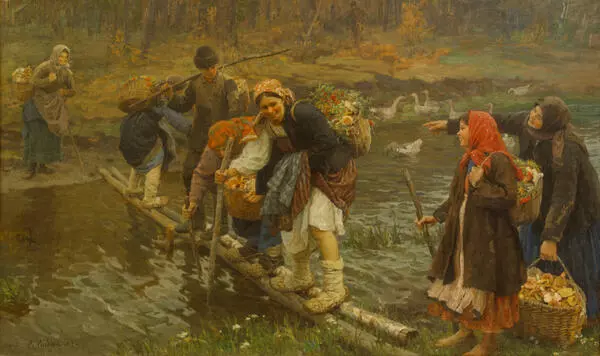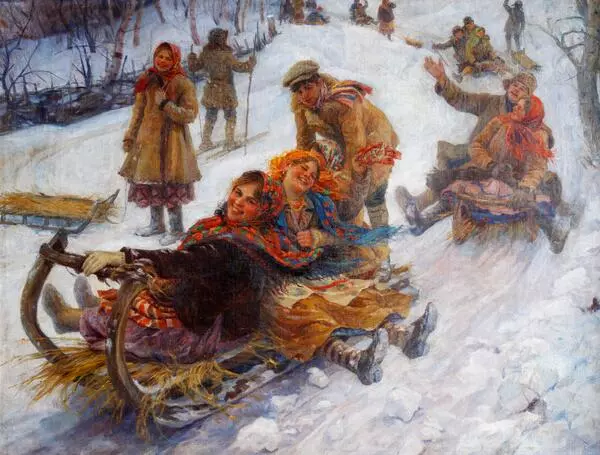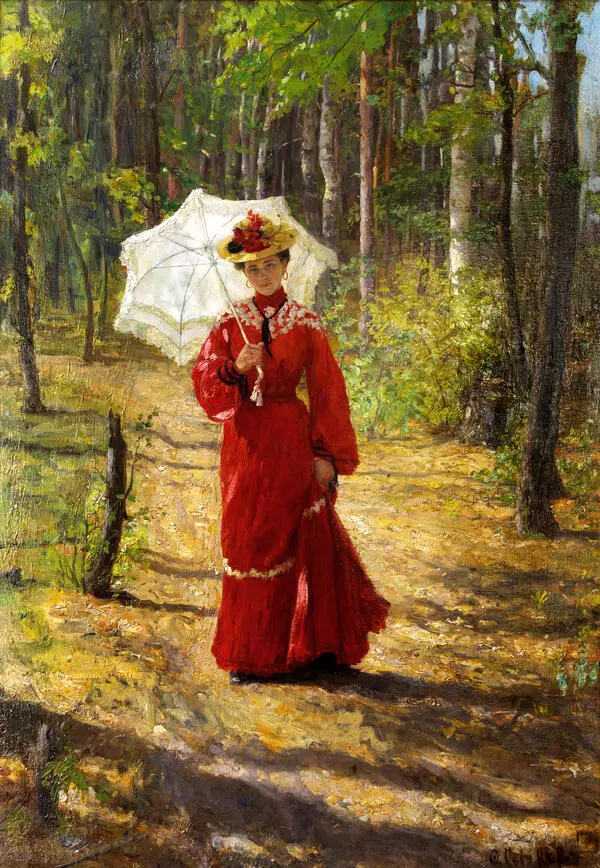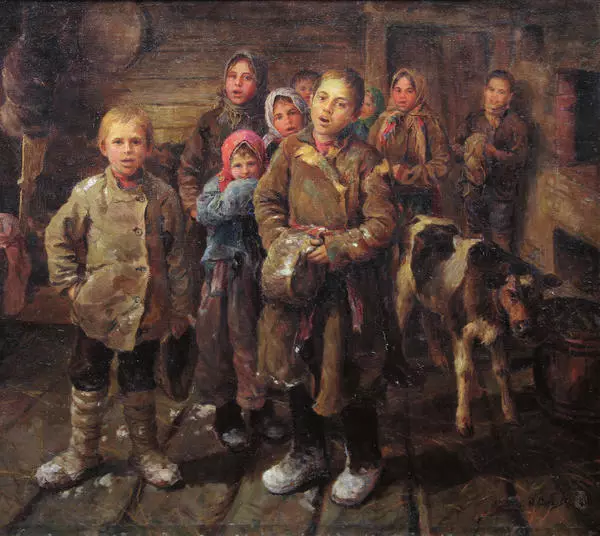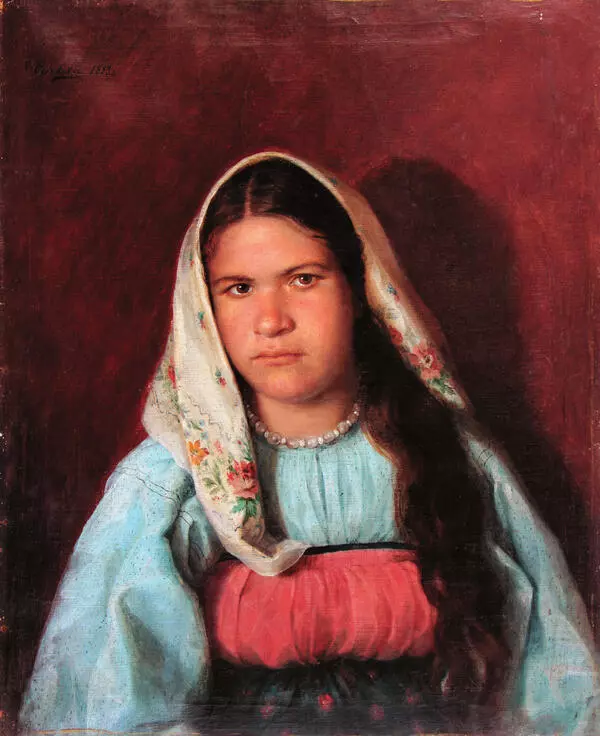The painting ‘Festival Day. Girlfriends. Winter.’ is an enlarged version of the author’s 1930 painting “Girlfriends”, which is housed in The State Tretyakov Gallery. It shows rural outdoor festivities: three elegant girlfriends walk along a snow-covered street on a warm winter day. Their bright shawls with floral patterns, large beads, and their lively smiles attract everyone’s attention. All the villagers look at the fashionable girls: the boy with a girl in a sled, and the girls sitting on the logs. A woman, in the distance, even puts her shoulder yoke with buckets on the snow to get a better look at the rural beauties
The artist achieved the utmost realism by painting the characters against a natural background — a rural street with small log izbas (huts) and snow-covered roofs. He also depicted the leaning fences and birdhouses in the branches of the willows. The street that goes into the horizon creates a sense of depth. The snow-capped hills in the distance merge with a narrow strip of the sky. The artist masterfully created the aerial perspective: distant houses seem to disappear in a light haze. A similar blurriness would be captured by the human eye. This is because the air has its mass and even color; there are always light dust particles, wet droplets, and other impurities in the air. Due to constant outdoor work, Fedot Sychkov was perfectly well aware of this quality and skillfully showed it on his canvases. Therefore, in his paintings, even the seemingly empty space is filled with soft light and has its own color scheme.
In the painting ‘Festival Day. Girlfriends. Winter.’ the artist used the most vibrant colors of the palette. At the same time, he did not allow any excessive diversity of colors or false contrasts that irritate the eyes. All colors are matched harmoniously to each other. The color scheme of the snow especially attracts attention. Tinted with the rays of the sun, it sparkles with pink shades on the roofs of the izbas. On the roadsides and under the feet of residents, the snow is painted in many colors, from golden to greenish in the shadows.
By the 1920s and 1930s, Sychkov’s style of painting had developed towards a colorful, bright color scheme. In the artworks of this period, he showed the festive side of rural life: in the 1927 painting “Holiday” and on the canvas of the same name in 1928, these qualities came into full play. Fedot Sychkov, consistent in his beliefs and in his love for the Russian countryside, portrayed the main heroines in his canvases — young, rosy-colored peasant girls with their constant smiles.
The artist achieved the utmost realism by painting the characters against a natural background — a rural street with small log izbas (huts) and snow-covered roofs. He also depicted the leaning fences and birdhouses in the branches of the willows. The street that goes into the horizon creates a sense of depth. The snow-capped hills in the distance merge with a narrow strip of the sky. The artist masterfully created the aerial perspective: distant houses seem to disappear in a light haze. A similar blurriness would be captured by the human eye. This is because the air has its mass and even color; there are always light dust particles, wet droplets, and other impurities in the air. Due to constant outdoor work, Fedot Sychkov was perfectly well aware of this quality and skillfully showed it on his canvases. Therefore, in his paintings, even the seemingly empty space is filled with soft light and has its own color scheme.
In the painting ‘Festival Day. Girlfriends. Winter.’ the artist used the most vibrant colors of the palette. At the same time, he did not allow any excessive diversity of colors or false contrasts that irritate the eyes. All colors are matched harmoniously to each other. The color scheme of the snow especially attracts attention. Tinted with the rays of the sun, it sparkles with pink shades on the roofs of the izbas. On the roadsides and under the feet of residents, the snow is painted in many colors, from golden to greenish in the shadows.
By the 1920s and 1930s, Sychkov’s style of painting had developed towards a colorful, bright color scheme. In the artworks of this period, he showed the festive side of rural life: in the 1927 painting “Holiday” and on the canvas of the same name in 1928, these qualities came into full play. Fedot Sychkov, consistent in his beliefs and in his love for the Russian countryside, portrayed the main heroines in his canvases — young, rosy-colored peasant girls with their constant smiles.
